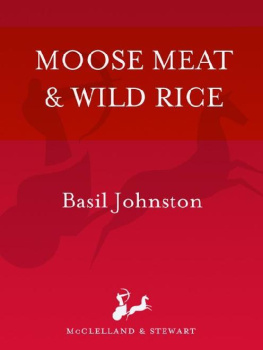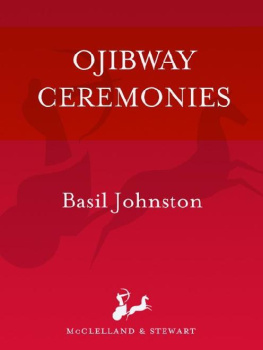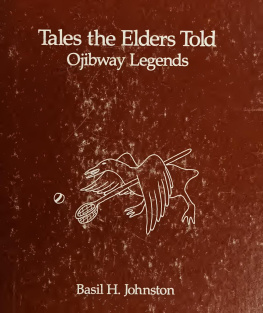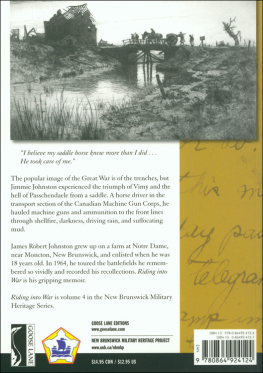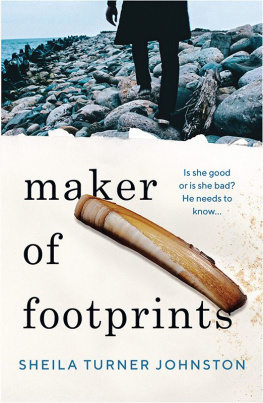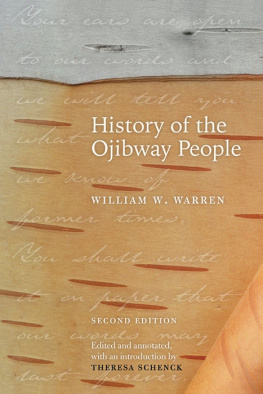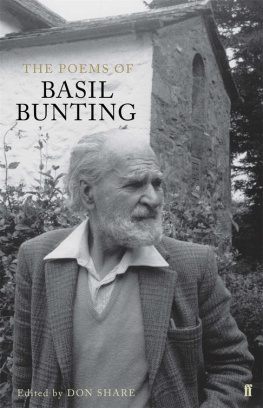Basil Johnston - Ojibway Heritage
Here you can read online Basil Johnston - Ojibway Heritage full text of the book (entire story) in english for free. Download pdf and epub, get meaning, cover and reviews about this ebook. City: Toronto, Ontario, year: 1976, publisher: McClelland & Stewart, genre: Art. Description of the work, (preface) as well as reviews are available. Best literature library LitArk.com created for fans of good reading and offers a wide selection of genres:
Romance novel
Science fiction
Adventure
Detective
Science
History
Home and family
Prose
Art
Politics
Computer
Non-fiction
Religion
Business
Children
Humor
Choose a favorite category and find really read worthwhile books. Enjoy immersion in the world of imagination, feel the emotions of the characters or learn something new for yourself, make an fascinating discovery.
- Book:Ojibway Heritage
- Author:
- Publisher:McClelland & Stewart
- Genre:
- Year:1976
- City:Toronto, Ontario
- Rating:3 / 5
- Favourites:Add to favourites
- Your mark:
- 60
- 1
- 2
- 3
- 4
- 5
Ojibway Heritage: summary, description and annotation
We offer to read an annotation, description, summary or preface (depends on what the author of the book "Ojibway Heritage" wrote himself). If you haven't found the necessary information about the book — write in the comments, we will try to find it.
Ojibway Heritage — read online for free the complete book (whole text) full work
Below is the text of the book, divided by pages. System saving the place of the last page read, allows you to conveniently read the book "Ojibway Heritage" online for free, without having to search again every time where you left off. Put a bookmark, and you can go to the page where you finished reading at any time.
Font size:
Interval:
Bookmark:

This Ojibwuy logo by Del Ashkewe, from Cape Croker symbolizes the content of the book. The large circle at the top with four projections represents Kitche Manitou, the Creator. A circle symbolizes spirit; to denote Great Spirit, a larger circle was circumscribed around a smaller. The four projections indicate universal presence.
The inverted semi-circle below the symbol for Kitche Manitou represents sky and universe. Immediately below is the symbol of the Sun; it represents life and time, linear and cyclic.
Under the Sun is the image of man within a sphere. Together they represent human life and existence and being.
Conjoining the symbol for life to the symbol for Kitche Manitou is the line of life and power: with the two branches on either side sweeping upward and outward denoting the Tree of Life, plantkind upon which all beings are sustained.
The base for the Life-line and the Tree of Life formed by a straight line represents the earth and rock, the substance of Mother Earth. The teepees in different styles image tribes, communities, societies and families and mean different styles and modes of living.
On either side of the figure of the encircled man are other men and women. Those nearest to the central image with wavy lines emanating from their lips reflect speech, history, languages and stories. Next to the speakers are women, symbols of the primacy and constancy of womankind. The figures most remote from the centre mirror sustenance and patterns of life. The four orders of animals, Tree of Life, earth, and men and women represent being, and existence and time.

Copyright 1976 by McClelland & Stewart
Emblem is an imprint of McClelland & Stewart Ltd.
Emblem and colophon are registered trademarks of McClelland & Stewart Ltd.
All rights reserved. The use of any part of this publication reproduced, transmitted in any form or by any means, electronic, mechanical, photocopying, recording, or otherwise, or stored in a retrieval system, without the prior written consent of the publisher or, in case of photocopying or other reprographic copying, a licence from the Canadian Copyright Licensing Agency is an infringement of the copyright law.
LIBRARY AND ARCHIVES CANADA CATALOGUING IN PUBLICATION
Johnston, Basil, 1929
Ojibway heritage
eISBN: 978-1-55199-590-8
1. Chippewa Indians Religion and mythology. 2. Indians of North America Religion and Mythology. 3. Chippewa Indians Legends. 4. Indians of North America legends. I. Title.
E 99. C 6 J 62 299.7 C 76-7343-0
We acknowledge the financial support of the Government of Canada through the Book Publishing Industry Development Program and that of the Government of Ontario through the Ontario Media Development Corporations Ontario Book Initiative. We further acknowledge the support of the Canada Council for the Arts and the Ontario Arts Council for our publishing program.
Illustrations courtesy of the Royal Ontario Museum
McClelland & Stewart Ltd.
75 Sherbourne Street
Toronto, Ontario
M 5 A 2 P 9
www.mcclelland.com
v3.1

Turtle, reproduced by permission of Del Ashkewe.
If the Native Peoples and their heritage are to be understood, it is their beliefs, insights, concepts, ideals, values, attitudes, and codes that must be studied. And there is, I submit, no better way of gaining that understanding than by examining native ceremonies, rituals, songs, dances, prayers, and stories. For it is in ceremony, ritual, song, dance, and prayer that the sum total of what people believe about life, being, existence, and relationships are symbolically expressed and articulated; as it is in story, fable, legend, and myth that fundamental understandings, insights, and attitudes toward life and human conduct, character, and quality in their diverse forms are embodied and passed on.
But it is not enough to listen to or to read or to understand the truths contained in stories; according to the elders the truths must be lived out and become part of the being of a person. The search for truth and wisdom ought to lead to fulfilment of man and woman.
It is in the hope that the heritage of the Ojibway speaking peoples and their Algonkian brothers and sisters will be a little better understood that this book was written, though it represents but a small portion of the total fund of unwritten tradition. It is one way of perpetuating and enhancing the bequest of our forefathers as it is a means of sharing that gift with those whose culture and heritage may be very different but who wish to enlarge their understanding.
What is difficult in an undertaking of this kind is retaining the substance of the meaning of the stories while changing the images, metaphors, and figures of speech which must necessarily be done during any translation and interpretation from one language to another in this instance, from Ojibway into English. Readers are asked to bear in mind that like any other language, Ojibway makes liberal and imaginative use of images, metaphors, and figures of speech to express in the concrete abstract ideas and concepts. The stories recorded are not to be interpreted literally; but freely, yet rationally according to the Ojibway views of life. Readers and listeners are expected to draw their own inferences, conclusions, and meanings according to their intellectual capacities.
Because each Ojibway story may embody several themes and meanings, time and deliberation are required for adequate appreciation. There is no instantaneous understanding. Ojibway stories are as broad and deep in meaning and mystery as are the tales, legends, and myths of Greek, Roman, Egyptian and other peoples and just as difficult to understand as are the parables in the Bible.
Fortunately Ojibway stories are flexible in nature and scope. It is for this reason that they are best narrated. Skill and imagination will enable the story-teller to impart any level of meaning according to the scope and ability of his audience.
Many, if not most of the stories, related in this book will be found to be similar to the stories of the Cree, Abenaki, Black-foot, Micmac, Menominee, and other Algonkian speaking peoples. That this is so ought not to be astonishing. The similarities that exist simply suggest a common view of life.
For the stories that I have recorded I am indebted to innumerable story-tellers in Ontario; for the understandings, I gratefully acknowledge the guidance of Edward Kaghee (deceased); Aylmer Plain; Gregor Keeshig; Tom Medicine; Maria Seymour; Fred Greene; Jane Rivers; Flora Tabobandung; Fred Wheatley; William Meawassige; Mike Trudeau (deceased); Rose McLeod (deceased), my grandmother; Sam Zawamik; for allowing me scope and for their encouragement, thanks to Dr. E. S. Rogers and Dr. H. Fuchs, my colleagues in the Department of Ethnology; for support, to the woman I love and my family; for typing, to Margaret Cozry; for patience and latitude to my employer, the Royal Ontario Museum; and to Anna Porter for considering my manuscript worthy of publication.
I would like to state that I have not received any benefit from any patron, fund, foundation, or council in the preparation and writing of this book.
HERITAGE
Font size:
Interval:
Bookmark:
Similar books «Ojibway Heritage»
Look at similar books to Ojibway Heritage. We have selected literature similar in name and meaning in the hope of providing readers with more options to find new, interesting, not yet read works.
Discussion, reviews of the book Ojibway Heritage and just readers' own opinions. Leave your comments, write what you think about the work, its meaning or the main characters. Specify what exactly you liked and what you didn't like, and why you think so.


